It is known that with constant vegetative reproduction (rhizome, tubers, the division of the bush), many plants are aging and degenerated. Did not escape this fate and potatoes. It is considered that three factors affect the intensity of degeneracy: viral diseases, varieties and external adverse conditions.
Viral diseases
There are plants when infected with plants through the bites, cycades, herbal bugs, when contacting the leaves of a healthy plant with the leaves of the patient. There are many diseases, and it is possible to notice them by changes in the leaves, the appearance of a grudge or mosaic pattern on them, weak height of the bush, etc.
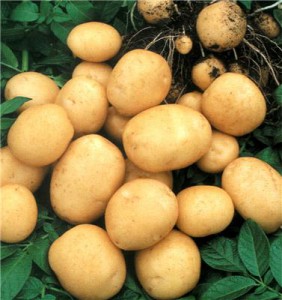 . Cropbed mosaic plant does not oppress. Light spots appear on the leaves, well visible in cloudy weather. The disease is transferred to healthy plants with friction of leaves.
. Cropbed mosaic plant does not oppress. Light spots appear on the leaves, well visible in cloudy weather. The disease is transferred to healthy plants with friction of leaves.
. Mosaic twisting of the upper leaves. Transferred tool, contact, clouds. The patient plant has smaller sizes of a bush, leaves and tubers.
. Aukuba-mosaic - transmitted tool and contact.
. The ring mosaic causes the stems of the stems and necrosis of tubers, is transmitted by nematodes.
In addition to the listed, there is still a folded mosaic, a bouquet disease, the spindlers of tubers and others.
Viral diseases worsen the quality of tubers and reduce the harvest. If you do not fight them, they can spread over the site and cause serious damage. It is especially important to keep healthy seed potatoes. Tubers who will go landing next year are taken particularly carefully (or grown in separate sites).
Measures to combat viral diseases
. Spraying insecticides (3-5 treatments for the growing season against floss, bugs, cycades).
. Selection of varieties resistant to viruses.
. Cleaning the site at which all infected bushes are removed. It is conducted early until plants closed.
. Early planting of potatoes and early cleaning.
. Timely removal of tops.
. The rare arrangement of bushes with the danger of infection with contact viruses.
. To reduce the malicious effects of disease, careful care and timely execution of agrotechnical measures should be ensured.
. Good results give feeding organic (cowboat) and the use of growth regulators,
Diseases from unfavorable conditions
. Brown spotty stem and tubers sometimes appear on potatoes grown on sandy soils. Since calcium is easily flushed out of them, they gradually cry. The edges of the leaves in such plants are yellow or pose, the bush stops its height, the brown stains of the fat tissue appear on the stems.
. Supportness of tubers arises as a result of making large doses of nitrogenous fertilizers.
. The bronze of the leaves occurs in potatoes, which is grown on floodplain and peat soils - with an excess of calcium and a disadvantage of potassium. The disease is manifested by a bowl of everything after flowering potatoes and begins with the lower leaves, which become wrinkled and painted in the bluish color of oxidized bronze. Then the leaves are falling, and the stalks are still in green.
. The darkening of the pulp can most often comes from shocks about solid surfaces when cleaning and transporting them. With strong damage to the tubers become solid and skidded.
Varieties of potatoes
Currently existing potato varieties are very much and they differ in biological and economic (commodity) qualities. Choosing a variety for landing on its plot, pay attention to their characteristics. Have a good variety should be:
. Resistance to most viral and bacterial diseases
. The ability is well and kept
. Tasty with a pleasant smell (with culinary processing) tubers.
. not darkening in water and do not give a dark decoction of tubers
. Good crops of smooth medium tubers
. High resistance to stressful phenomena of nature: Sukhovam, drought, light freezers
. Tubers of good texture (without fibers) and surface eyes that do not interfere with the cleaning of the peel
You can find other positive qualities of a good variety, for example, a high content of dry substances, vitamin C, etc.
It is better to grow 3-4 good varieties of different maturation terms.
Characteristics of varieties
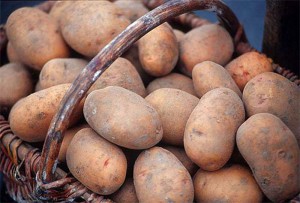 . Bryansk novelty. The variety is medieval, a bush is low, half scattery, stalks are very branched, the leaves dissected. Flowers abundantly white inflorescences. Berries does not forms. Tubers with yellow smooth skin, white pulp and red color eyes. Yield and taste quality are good. Grade resistant to phytoofluorosis, severe forms of viral diseases and cancer. Percept for golden potato nematode.
. Bryansk novelty. The variety is medieval, a bush is low, half scattery, stalks are very branched, the leaves dissected. Flowers abundantly white inflorescences. Berries does not forms. Tubers with yellow smooth skin, white pulp and red color eyes. Yield and taste quality are good. Grade resistant to phytoofluorosis, severe forms of viral diseases and cancer. Percept for golden potato nematode.
. Orchid. Medium grade derived in Belarus. High bush, reprehensive. White flowers, a little berries. Tubers rounded shape with yellow pulp and peel. Eye sitting finely.
. Blue. Medieval, high-yielding, drought-resistant grade. Named so for abundant flowering with bright blue flowers. The bush is a high reprehension with a large number of stalks. Dark green leaves with poor housing. Berries does not forms. Tubers rounded with acute vertex. Peace mesh white coloring. White flesh, not darker. Eye numerous. Taste quality and lyrge bone are good. Grade is resistant to cancer, phytoophluorosis and viral diseases. Unstable to nematode and scaffolding. Amazed by black leg.
. Lorch. Middle-varietary variety, universal. The bush is high with a large amount of light green leaves. Flowers pale pink-purple with white tips. Berries are rarely formed. The tubers round-oval, when cooking is well welded. Peel white, smooth, the tops have peeling. White flesh. Red-purple sprouts. Taste qualities and guilt are good. Resistant to degeneration and wrinkled mosaic. Unstable to twist the leaves. Can be damaged by phytoofluorosis and cancer. Tubers are resistant to mechanical damage. The variety is suitable for processing on chips.
. Lugovskaya - variety from Ukraine. The bush is a high reprehension, compact with thick shoots. Leaves dark green. White flowers. Pink coloring tubers, oval with stupid vertex.
The eyes are small. Skin smooth. The flesh is white, does not darken in water and during cooking. Grade is resistant to cancer and some viral diseases. Unstable to nematode and most viral diseases.
. Zhukovsky Early - very early high-yielding grade. Flowers red-purple. Berries does not happen. Tubers rounded and oval pink coloring with fine eyes. White flesh, tasty. The grade is resistant to cancer and nematode, but may be affected by some viral diseases and phytoofluoric leaves. Tubers are resistant to mechanical damage. The variety adapts well to different soil types.
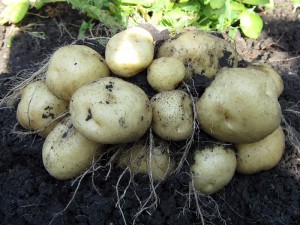 . Lasunok (Belarus). Vertime variety, late ripening time. Tubers oval-rounded, large. The peel is yellow-white, pulp - cream, contains an increased amount of starch, to 22%. Taste qualities and guilt are good. Resistant to phytoophluorosis and cancer. Slightly amazed with viral diseases. More significantly - bacterial (black leg, ring rot). Unstable to nematode.
. Lasunok (Belarus). Vertime variety, late ripening time. Tubers oval-rounded, large. The peel is yellow-white, pulp - cream, contains an increased amount of starch, to 22%. Taste qualities and guilt are good. Resistant to phytoophluorosis and cancer. Slightly amazed with viral diseases. More significantly - bacterial (black leg, ring rot). Unstable to nematode.
. Autumn - average variety. Tubers rounded white coloring. Skin smooth. The flesh cream Taste quality good. It has a high starch content. Suitable for cooking dry granulate. Resistant to cancer. Mid-resistant virus diseases and black leg. It can be grown on soils of different types.
. Ramensky is a medium-bed high-yielding grade. Tubers rounded-oval, white, peel shallow skewer. Small eyes small. White flesh with a large starch content. Suitable for the manufacture of high quality chips. Resistant to cancer, phytoofluorosis, mosaic viruses. Low-resistant to the leaf twist virus.
. Bullfinch - Early high-yielding grade. The name received for a bright pink color and an oval shape of a tuber, reminiscent of a basting of a bulk. Taste quality excellent. The pulp of the tuber does not darken on the cut and during cooking. The tuber is round-oval, red. Red eyes small. Skin smooth. White flesh. The grade is resistant to cancer, phytoophluorosa and passion ordinary. High resistant to viral diseases. The football of the tuber is good.
. Duckling. The variety of early ripening. Quickly forms tubers (70 days after germination). Bush is a straight average size. The shoots are weakly painted by Anthocian along the entire length. Leaves dark green. Flowers close-up white flowers in compact inflorescences. Forms a lot of berries. The tuber is oval-rounded, light yellow. Small eyes small. The flesh is light yellow. The taste is excellent. Resistant to cancer, but susceptible to golden nematode. Miscellaneous to phytoophluorosis of leaves.
. The effect is the high-yielding grade of the middle-edged ripening time. The bush is scattered, medium height, minor. Flowers of red and purple coloring with white tips of petals. Flowering is abundant. Tubers oval with stupid vertex, white, smooth with fine eyes. White flesh. Taste quality good. The grade is stable for cancer, weakly resistant to viral diseases. Amazed as a pair. The starch content in the tubers is high. The variety is suitable for the manufacture of chips and dry mashed potatoes.
. Rainbow - medium grade. Tubers elongated red coloring. Peace mesh, small eyes. White tuber pulp. Taste quality good. The grade is resistant to cancer, but is amazed by phytoofluorosis.





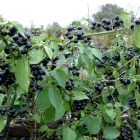
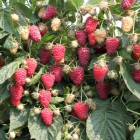
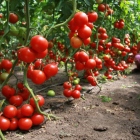
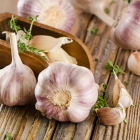
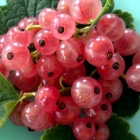
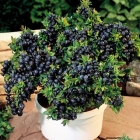
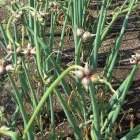
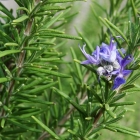
 Start a discussion ...
Start a discussion ...